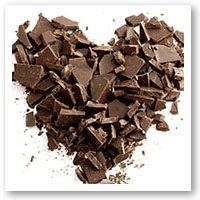Shampoo and Conditioner Alternatives
 For many years now I have tried to eliminate unnecessary chemicals in my life, this included switching to natural alternatives for shampoo, conditioner, face wash, moisturiser, deodorant, body wash, make up and tooth paste. Some of these products have been great and worked really well, and others have had a less than average effect on my skin or hair.
For many years now I have tried to eliminate unnecessary chemicals in my life, this included switching to natural alternatives for shampoo, conditioner, face wash, moisturiser, deodorant, body wash, make up and tooth paste. Some of these products have been great and worked really well, and others have had a less than average effect on my skin or hair.
Now that I am pregnant, it’s even more important to me to be avoiding as many harsh chemicals as possible.
Over the next few months I will be writing about my experiences with different beauty regimes.
This month – hair!
I have always had fairly oily hair and moving to natural shampoos didn’t help that at all. In recent years I have also had pimples in my scalp, which can be rather painful and uncomfortable. So I was getting a bit frustrated with frequent washing of my hair, having thick and long hair it would take all day to dry naturally.
So after some internet browsing I found a possible solution that gave me a little hope. It’s called the “no poo” method, and no it’s not constipation. It involves using baking soda as a shampoo alternative and for the conditioner an apple cider vinegar (ACV) rinse.
This method is not only beneficial for oily hair, but also dry, curly and frizzy hair.
The idea is that the more you wash your hair, the more the natural oils are removed, so your scalp over produces extra oils and you need to wash your hair more. It’s great for shampoo sales but not so great for your scalp. Our ancestors certainly didn’t wash their hair every day or 2, and over the last hundred years the washing has become more and more frequent.
A brief how to;
- Mix 1 tablespoon baking soda with a cup of water for the shampoo
- Mix 1 tablespoon ACV with a cup of water for the conditioning rinse
- Brush your hair daily with a bristle brush to distribute hairs away from the scalp
- Try to extend your hair washing day by 1 each wash so the oils have a chance to rebalance
There are alternatives you can use, such as egg for the shampoo and lemon juice, honey and tea for the conditioner. I did find the honey made my hair oily though so I am sticking with ACV.
My experience has been mostly positive, with a few headband/scarf days when I was at day 4-5. It’s a bit tough at
the time as I hate the feeling of dirty hair, but if you can get through these days it is supposed to make a big difference.
I had been going for about a month and was up to hair washing on day 5 or 6, then went to the (organic) hair dresser for a trim and didn’t want to miss out on the lovely scalp massage so also had shampoo and conditioner. I took a big step backwards after that and feel like I had to retrain my scalp! I think next time I will just be upfront with the hairdresser and ask them just to wet it for the cut. After the hairdresser I am now back to every 5 to 6 days, and interested to see if I can push it further. Some “no poo-ers” get to the point that they don’t even use the baking soda rinse anymore and might just rinse with water a few times a year.
I know many males that never shampoo their hair, and might just rinse it with water every few weeks. I have never noticed oily hair on them, even with all the gel they use.
So all in all I would say this has been a successful experiment, I am washing my hair half as often, I no longer have pimples in my scalp and my hair feels softer and cleaner (for the first few days anyway). It does get a bit stinky on Day 5-6, but hopefully this will get less and less.
For more information refer to;
http://www.nopoomethod.com/

 You have probably heard or read that chocolate can be beneficial for your health. In pre-Columbian Mesoamerica, chocolate was considered a “food for the gods”, was used in religious rituals and cacao beans were such a previous commodity that they were even used as a form of currency.
You have probably heard or read that chocolate can be beneficial for your health. In pre-Columbian Mesoamerica, chocolate was considered a “food for the gods”, was used in religious rituals and cacao beans were such a previous commodity that they were even used as a form of currency. Digestive disorders can be a very frustrating condition to have, with the stomach aches, urgent trips to the toilet, bloating, pain, avoiding certain foods and many more embarrassing situations. It comes as a very welcome relief for patients when they seek help for these conditions.
Digestive disorders can be a very frustrating condition to have, with the stomach aches, urgent trips to the toilet, bloating, pain, avoiding certain foods and many more embarrassing situations. It comes as a very welcome relief for patients when they seek help for these conditions. It’s that time of year again. The days are getting longer (slowly), we are beginning to look forward to summer and we are becoming more motivated to get out and exercise. For some of us that means signing up for one of the many fun runs, half marathons or maybe even marathons that are held in Sydney over the next 6 months. Running is great for your fitness and for weight loss, but it can be hard on your body, especially if you haven’t done much of it in the past few months.
It’s that time of year again. The days are getting longer (slowly), we are beginning to look forward to summer and we are becoming more motivated to get out and exercise. For some of us that means signing up for one of the many fun runs, half marathons or maybe even marathons that are held in Sydney over the next 6 months. Running is great for your fitness and for weight loss, but it can be hard on your body, especially if you haven’t done much of it in the past few months.